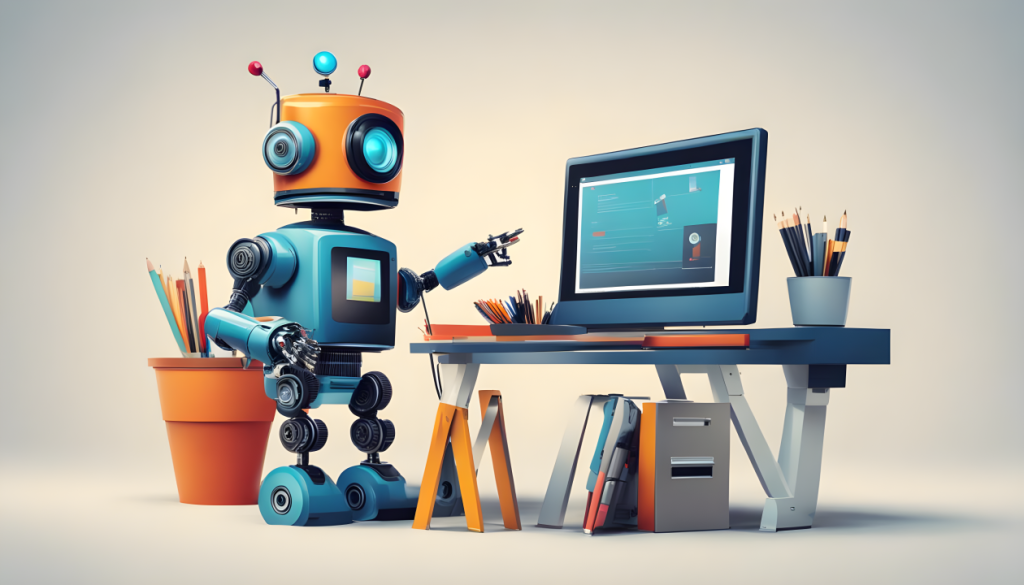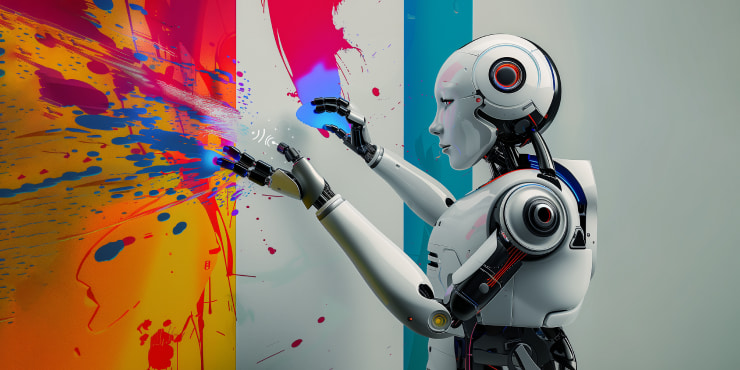Introduction: The Designer at a Crossroads
Artificial Intelligence is no longer a conceptual tool; it is a tangible force reshaping industries worldwide. For designers, AI represents both opportunity and threat. On one hand, AI can automate repetitive tasks, accelerate workflows, and generate near-instantaneous creative outputs. On the other hand, it raises existential questions: Will designers be replaced? Will human creativity become obsolete? Or will the profession simply be redefined?
This article explores the paradox of automation in design — how AI simultaneously disrupts traditional roles while creating new possibilities — and offers a vision for the future of the designer in an AI-driven world.
1. Automation in Design: Scope and Impact
1.1 From Routine Tasks to Complex Workflows
Historically, automation in design meant streamlining tedious processes such as file formatting, color correction, or asset resizing. Today, AI extends beyond routine tasks into sophisticated workflows:
- Generative design: AI can create multiple design options for architecture, industrial products, or web interfaces in minutes.
- Content generation: Tools like Midjourney or DALL·E produce high-quality visuals based on textual prompts.
- UX analysis: AI algorithms evaluate user interactions and suggest layout improvements automatically.
This level of automation raises fundamental questions about which aspects of design remain uniquely human.
1.2 Efficiency vs. Originality
AI-driven automation enhances speed and output quality. For example, an AI system can produce ten landing page concepts in the time a human designer might create one. Yet, efficiency does not guarantee originality.
While AI excels at recombining patterns from existing datasets, human designers bring context, intuition, and cultural understanding — qualities that remain challenging to encode algorithmically.
2. The Replacement Myth
2.1 Will AI Make Designers Obsolete?
Popular media often sensationalizes AI as a replacement for creative professionals. However, the reality is nuanced:
- Partial replacement: Some junior or routine tasks are highly susceptible to automation, such as generating stock images or layout iterations.
- Collaborative replacement: In more complex creative processes, AI functions as a collaborator, not a substitute, enhancing rather than replacing human judgment.
A complete replacement of designers is unlikely because design is inherently contextual and narrative-driven, requiring understanding of human emotion, social norms, and cultural significance.
2.2 Evidence from Industry Adoption
Companies integrating AI into design workflows report that designers spend more time on strategy and conceptual thinking, rather than less. For instance:
- Advertising agencies use AI to generate multiple campaign visuals, freeing creative teams to focus on brand storytelling.
- Product design firms leverage generative AI for prototyping, allowing engineers and designers to explore innovative forms and structures rapidly.
This demonstrates that AI shifts the designer’s role rather than eliminating it.
3. Redefining the Designer
3.1 From Maker to Curator
With AI, the designer’s role transforms from being the primary producer to being a curator of machine-generated outputs. Designers evaluate, refine, and select from AI-generated options to ensure relevance, originality, and brand alignment.
This new role emphasizes judgment, critical thinking, and ethical decision-making over manual production skills.
3.2 Emergence of Hybrid Skill Sets
Designers now need to combine creative intuition with computational literacy:
- Understanding AI limitations and biases.
- Crafting effective prompts and guiding generative processes.
- Integrating AI outputs into broader design systems or narratives.
This hybrid skill set blurs the line between artist, engineer, and strategist, redefining the identity of the modern designer.

4. Ethical and Cultural Implications
4.1 Bias and Representation
AI learns from historical datasets, which may reflect existing social biases. Designers must act as ethical filters, ensuring outputs do not perpetuate stereotypes or cultural insensitivity.
This adds an ethical dimension to the role: designers are no longer just creators, but guardians of fairness and inclusivity in AI-generated content.
4.2 Ownership and Authorship
Who owns AI-generated designs? Legal frameworks lag behind technology, raising questions of intellectual property. Designers must navigate copyright ambiguity, attributing AI contributions appropriately while retaining creative control.
4.3 Preserving Human Creativity
Relying too heavily on AI could homogenize aesthetic sensibilities, as generative models are trained on widely available datasets. The responsibility to maintain distinctive human creativity becomes central to the designer’s role.
5. Opportunities for Expansion
5.1 Exploration of New Creative Territories
AI opens doors to design possibilities previously unattainable, such as:
- Dynamic adaptive interfaces responding to real-time user behavior.
- Architectural designs optimized for energy efficiency and structural integrity through generative algorithms.
- Fashion collections inspired by global trends synthesized instantly by AI.
5.2 Democratization of Design
AI reduces technical barriers, enabling more people to engage in creative work. Small businesses, independent artists, and non-professionals can access tools that previously required specialized expertise. Designers become guides and mentors, amplifying creativity across society.
6. Strategies for Designers to Thrive
6.1 Embrace AI as a Partner
Resistance to AI is futile; designers must integrate AI into their workflow, experimenting with new tools to enhance creative output.
The focus shifts to asking the right questions: Which parts of the process are best handled by AI? Which require human judgment?
6.2 Continuous Learning
AI technology evolves rapidly. Designers must stay current with tools, techniques, and trends — not just for efficiency but to retain strategic relevance.
6.3 Focus on Human-Centric Design
The ultimate differentiator remains empathy and cultural literacy. Machines can generate forms, but only humans can ensure designs resonate emotionally, ethically, and socially.
7. The Future: Co-Evolution of Designers and AI
The paradox of automation is that AI both challenges and elevates human roles. Designers will never be entirely replaced, but their identity will evolve:
- From manual creation to strategic orchestration
- From solitary practice to human–AI collaboration
- From technical mastery to ethical and cultural fluency
In this future, designers are not obsoleted but augmented, co-creating alongside intelligent systems, pushing creativity beyond traditional boundaries.
Conclusion
AI presents a paradoxical reality: it can automate tasks that designers once controlled, yet simultaneously expand the horizons of what design can be. The key for designers is not to compete with machines, but to embrace them as collaborators.
In doing so, designers move from being executors to curators, strategists, and innovators, navigating a world where technology magnifies human imagination rather than diminishes it.
The ultimate insight is clear: AI does not replace designers — it redefines what it means to be a designer.











































